Top Technology Apps for Teachers and Administrators
10/19/2016

Technology in the classroom is so commonplace at this point that writing a list about technology in the classroom actually seems cliché. In fact, just starting a piece about technology in the classroom by talking about technology in the classroom is probably cliché. Of course this doesn't mean we shouldn't be talking about it either. For better or for worse, most classrooms at every level are using multiple forms of technology to handle the jobs of content distribution, content management, attendance management and of course, teaching. If you polled 30 different teachers you might get 30 different answers about what technology in the classroom means to them but there is no denying that as a concept and a learning tool, technology is here to stay.
With that in mind, we figured that now was as good a time at any to take stock of the EdTech landscape and especially how it relates to teachers and how teachers use and interact with the technology. There are no hard and fast rules to determining which apps make the cut and which don't. Some are old and indirectly useful. Others are brand-new and have a direct impact on teaching and student learning. Without further ado, let's get into the details.
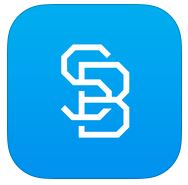 StudyBlue
StudyBlue
It seems silly to think of a flashcard app as revolutionary but StudyBlue has come close. The app allows students to make their own flashcards, upload and organize any helpful notes, add multimedia that may be helpful and then quiz themselves to help them prepare. This doesn't sound like much, but the reviews are nearly unanimously positive in iTunes and Google Play, so the app must be doing something right. Students can collaborate with each other within the app, there is a percentage mastery feature that helps students track their progress and there is even an offline mode that allows students to use it on the go. It isn't easily customizable but that seems like it is picking at nits compared to gushing reviews from elated users.
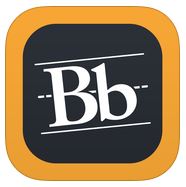 Blackboard Mobile Learn
Blackboard Mobile Learn
A member of the old guard of educational apps, if Blackboard feels like one of the first classroom-management platforms that is because it was one of the first classroom-management platforms. But Blackboard's Mobile Learn app is proof positive that you can teach an old dog new tricks. The app is inexpensive to buy, offers a similar user experience to the desktop platform and can perform numerous important tasks that help teachers remain organized, interact with students and their assignments and collect and store grades and notes. The functionality still leaves something to be desired and the app is designed to be collaborative with a school's server, so the transition into mobile has not been seamless. But the fact that teachers can now keep track of their classroom for the most part from their phone is quite the accomplishment in and of itself.
 TED
TED
Everyone's favorite intellectually stimulating lectures have been available in app form since 2015 but is only now becoming widely used in classrooms as teachers recognize the opportunity to leverage the app in their lectures and discussions. The app doesn't have any fancy bells and whistles because it doesn't need to have those. It makes up for that by housing the entire TED Talks library of more than 2,000 talks, making them downloadable and thus viewable offline and lets you customize playlists and bookmark talks for later. It isn't exactly reinventing the wheel, but teachers rave about how often they use these talks in classes now, which is good enough for us.
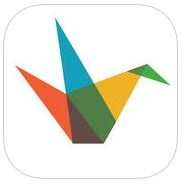 Haiku Deck
Haiku Deck
The days of laboring over PowerPoint presentations are rapidly coming to a close thanks to apps like Haiku Deck, which are making presentations easier to create and more aesthetically pleasing than ever. Once labelled as the "Instagram for pitch decks", Haiku Deck is incredibly easy to use on any device and its tools and simplified process and endless resources make it so easy to create a legitimate presentation your parents will never believe you are already done with your homework. The app is cheap and can be purchased for cheaper through a school program. It also offers integration with Google Classroom and its own in-house classroom management platform. The app isn't only for students either. Teachers can create easy-to-read presentations for their students or for fellow teachers just as easily.
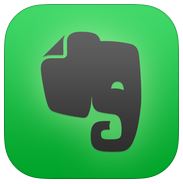 Evernote
Evernote
Another member of the old guard in EdTech apps, Evernote celebrated its eighth birthday this summer and they should probably toast to their longevity as well because teachers still swear by the note-taking app. Teachers that take the time to learn the ins and outs of the app and integrate the app with lesson-planning and curriculum have been able to eliminate handouts from their classrooms entirely and can keep track of assignments/handouts and notes in one handy central location. Evernote may have started as a simple digital note-taking app, but it has evolved into a one-stop shop for students' coursework and notes. Its tracking allows students and teachers to house all the educational data throughout the years in one place, which could have big implications on understanding a specific student's progress.
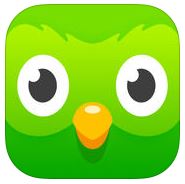 Duolingo
Duolingo
It is unclear how many foreign language tools are already actively using Duolingo in their classrooms but it is easy to see why the app makes sense from an educational standpoint. Quite simply, Duolingo is the easiest and best app to use for learning another language. It may never make a student completely fluent, but it's quizzes can easily replace the paper-and-pen foreign language quizzes of the past. It also tracks a student's mastery of the language and progress through the app. It is also extremely comprehensive and leaves no verb tense or past participle uncovered.
RELATED - TESOL Degrees
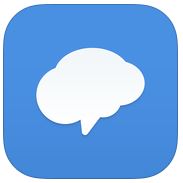 Remind
Remind
Even 10 years ago it would have seemed silly to build an app that could allow teachers to communicate with students via the telephone. But now that pretty much every high schooler in the country has a cell phone, teachers are using Remind as an easy way to help students remember assignments, tests and upcoming projects in real-time. The app doesn't use the personal cell phone numbers of its users, allowing them a modicum of privacy, and it also has a message scheduling feature that makes it easy for teacher to set up automated reminders that are sent to students on specific times and dates. With 20 million active users Remind is doing something right in education.
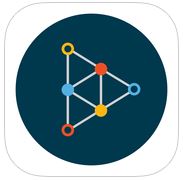 Educreations Interactive Whiteboard
Educreations Interactive Whiteboard
Whereas Haiku Deck simplifies the process of creating a A+-worthy presentation to a few simple steps, Educreations does something similar for teachers looking for an easy way to create and warehouse lectures and lessons. The app allows teachers to record versatile video and audiovisual tutorials that are stored for students and colleagues to access at their leisure. It also syncs with your media, meaning that teachers can import pictures and documents and other images from Dropbox or Box or your Google Drive. It is especially helpful for teachers in online classes because it simplifies the process and makes learning time more flexible for students.
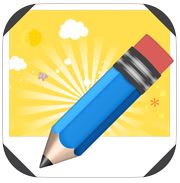 Write About This
Write About This
The idea of a social publishing platform seems so simple and so smart that it is worth wondering how it took so long for someone to do it well. RSA Group, LLC answered the call in the 2014 with Write About This and its evolving publishing platform has helped change the way teachers and students alike can evaluate their own and each other's writing. The app comes up with the writing ideas based on current events or specific topics, allowing students to choose their own or teachers to mix and match subject material and once a writing piece is finished, it can be shared with a specific or wider audience and the social aspect allows peers and teachers to comment on parts of the story in real-time. The program caters to schools and districts, allowing them to access to customized features and endless data.
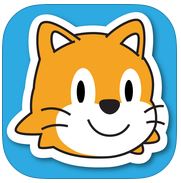 ScratchJr
ScratchJr
The good folks at MIT know a thing or two about computer science and their project ScratchJr, a programming language and vibrant online community of coders of all ages and skillsets, is one of the friendliest apps and communities for learning more about computer science. Students create interactive games and animations and Scratch simplifies the coding so that the student is easily able to understand how the design is being created and can learn from the steps he takes. The app and community are designed to be collaborative which is one of the reasons that teachers like using it so much. The communal aspect offers greater avenues to learning and makes using Scratch way more fun.
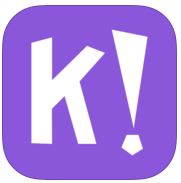 Kahoot!
Kahoot!
You would be hard-pressed to find a teacher who wouldn't agree that kids are usually more engaged with games than they are with boring worksheets or lessons. However, teachers don't have time to be converting their lesson plans into interactive games, which is where Kahoot! comes it. Enter the questions and the answers and the app will create the game for the students. It sounds simple but teachers rave about how much students love using it and many teachers swear by it for all of their assignments. Any app that successfully makes learning fun is probably worth using at least once.
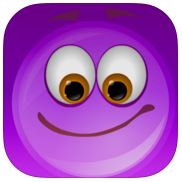 AutismXpress
AutismXpress
Perhaps our favorite app on the entire list is a very simple one. Children with autism have documented difficulty recognizing emotions and while many will insist that there is no substitute for real facial expressions and emotions, AustimXpress is a very simple way for children on the Autism spectrum to match emotions with faces, especially for younger students. The app has been around since 2010 and is in definite need of an update but the app allows for clear communication and the animation is simple and easy for students to understand. Technology in the classroom can be harder to use for students with special needs so we laud any attempt to merge the two areas.
RELATED -
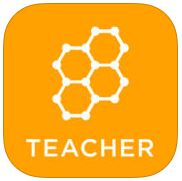 Socrative
Socrative
Those of us born before the 1990's probably remember the clicker-response style questions that were popular amongst college professors who were teaching huge lectures. Socrative is almost the exact same thing, only with twice the bells and whistles and more opportunities for student and teacher interaction. The app allows teachers to gauge interest and understanding of a particular topic in real time and also helps the teacher gather valuable data on which students need help in which areas. The app allows teachers to track student performance, save templates for quizzes they want to use over again and has built-in grading tools to make things easier for the teacher. It won't revolutionize the way teachers teach, but it is still a handy tool to carry on the tool belt.
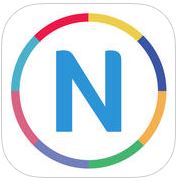 Newsela
Newsela
This app has been popular in classrooms for some time now as teachers love how easy it is to use, how to filter the content to suit specific students' reading level and how it uses quizzes to evaluate reading comprehension and student progress. The articles are no joke either. The app pulls stories from widely respected news organizations and trade publications, giving it an unparalleled library of diverse stories and articles to pick from. This app can not only help students keep up with current events but it also prevents teachers from having to make 200 photocopies of a story for class or even find a story for the class to read. The app does all of that for them and then tracks everything to boot.
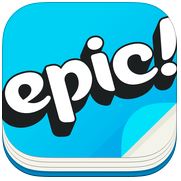 Epic! Unlimited Books for Kids
Epic! Unlimited Books for Kids
Epic! is similar to Newsela only it is generally geared for a younger audience. The idea for the app is quite simple. It is essentially an online library of books, graphic novels, articles and biographies. It also has educational videos, news articles, and documentaries available for viewing. The books and videos are accessible at any time and the app also allows students to create a profile for themselves so that teachers and students can start to understand what the reading preferences of that specific student are. The pricing is generally very low for educators and so the opportunity to gain access to a wide range of books on a wide range of topics for very cheap should be appealing to any elementary school teacher.
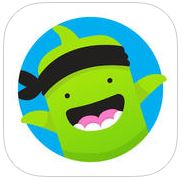 ClassDojo
ClassDojo
Another app that might be considered a member of the old guard, ClassDojo is a classroom management tool that tightens up the feedback loop between parents and teachers and students. Students have personal profiles and teachers create goals to track (homework, behavior, class participation). At the end of the day, teachers can share individual reports with parents. The time between data gathering and feedback is shortened immensely and the class can be more streamlined as teachers no longer need to interrupt themselves and can instead just dock points from a student.
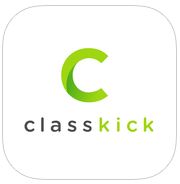 Classkick
Classkick
Similar to Socrative, Classkick is a free app designed to help teachers get instant feedback from students. The app is simple in its design. A teacher shares an assignment with the class in real-time. The students can see the assignment on their devices and once they have answered the questions, they can ask the teacher to check their work through the app. The teacher can provide feedback instantly and can watch as the student implements the feedback and demonstrates mastery of the subject. This is another app that is probably best suited for elementary-aged students, but it helps teachers effectively and efficiently make use of class time.
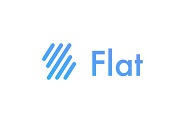 Flat
Flat
Music teachers drowning themselves in paper after paper of sheet music and red ink will be relieved to know that Flat helps with exactly that problem. Flat is the best digital musical score editing software platform available for educators. Students can write and edit their music in real-time and in collaborative fashion. Flat saves all the changes made, making it easy for teachers to track student progress and comprehension. Flat also makes it easy to add your existing music and gives you access to a wide array of instruments to choose from so no music student feels left out. Students rave about how much easier it is to learn how to read and write music in Flat.
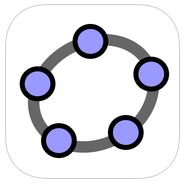 Geogebra
Geogebra
Everyone remembers the graphing calculator from their algebra and geometry class. Geogebra is an online graphic calculator but it is also much more. It is great for math teachers looking for dynamic software that can teach students algebra and geometry and even some basic calculus. The app can do everything from points and lines to derivatives and integrals. Its multiple representation strategy allows students to see how changing one part of the equation affects the equation as a whole. It isn't a visual masterpiece but it isn't supposed to be either. What it is, is one of the easier graphic calculators to use online today.
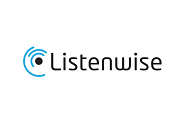 Listenwise
Listenwise
Listenwise is essentially curated public radio that has been specifically designed to fit lesson plans and packaged around general curriculum topics. The free version lets teachers find educational podcasts for themselves or for students that can be used to flip the classroom or just help students find research topics. The premium features include interactive transcripts of the audio, lessons aligned with common standards, custom assignment options and integration with learning management systems. Teachers love Listenwise because it makes their jobs easier. The podcasts and audio tapes are educational, comprehensive and specifically tailored to make the perfect one-day, in-class assignment.
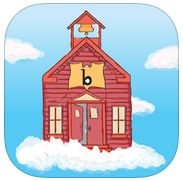 Buncee
Buncee
Yes, another online presentation tool lauded for its easy-to-use drag and drop interface and impressive media library. But Buncee deserves recognition for exactly those reasons. No, you probably won't be able to do an in-depth explanation of the geopolitical impact of the Magna Carta using Buncee, but younger students can learn how to mix and match different types of media and create informational designs and graphics on a variety of topics. The presentations can be interactive in a number of different ways. Teachers can even use the software to create quick and dirty lessons on specific subjects.
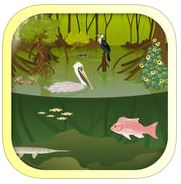 iBiome-Wetland
iBiome-Wetland
Bio domes were a big part of most students' formative elementary school years and this app from Springfield Studios allow students to learn about the science behind habitats and species and the environment while also having fun in a visually interactive way. Students explore different wetland habitats by building online bio domes. The goal is to build the best environment for the plants and species in the app. One of the more interactive science apps available for students, this app has racked up awards for STEM apps in its short existence and so they must be doing something right. Anything to help science teachers keep those like minded students engaged is a welcomed tool.
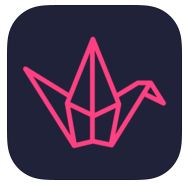 Padlet
Padlet
Padlet functions as a virtual wall or bulletin board. Teachers invite students to the group using a customized URL as Padlet is entirely web-based, and there they can post links, videos, images, audio. Essentially an assignment or handout or worksheet and even quizzes can all be stored in the Padlet. It is an excellent way for teachers and students to improve their communication with each other and because of its versatile features, teachers can use one padlet for an entire year and know that all of their information, notes and resources will be stored in one place. It is also a great way to create a portfolio to show to parents throughout the year.
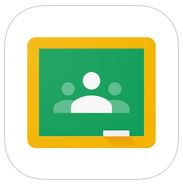 Google Classroom
Google Classroom
No matter what teachers might say about other learning and class management tools, Classroom is still the most popular and commonly found web-based learning platform in classrooms around the country. Heck half the apps listed above all eagerly tout their ability to integrate with Google Classroom because they know how important that is for class adoption. Classroom integrates your Education suite with the rest of Google tools allowing you to create presentations, use excel spreadsheets, share documents and use Gmail. Teachers can now create classes, distribute assignments, track students, communicate with students in real-time and organize their classroom how they see fit. It is the closest thing to a one-stop shop in digital education, which is why we saved it for last.
- The Benefits Of Learning a New Language and Being Bilingual - October 30, 2017
- 50 Amazing Field Trip Spots in the U.S. - October 26, 2017
- Parental Tips and Advice to Get an IEP Approved for Your Child - October 4, 2017









